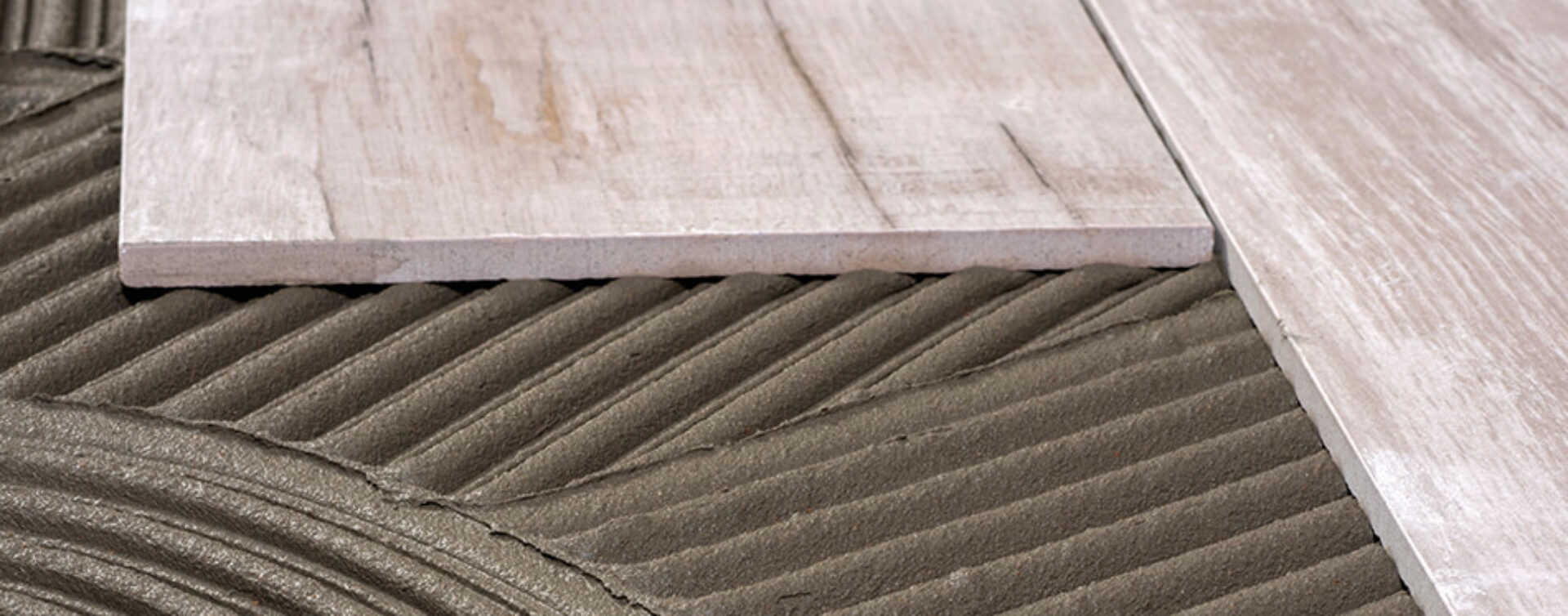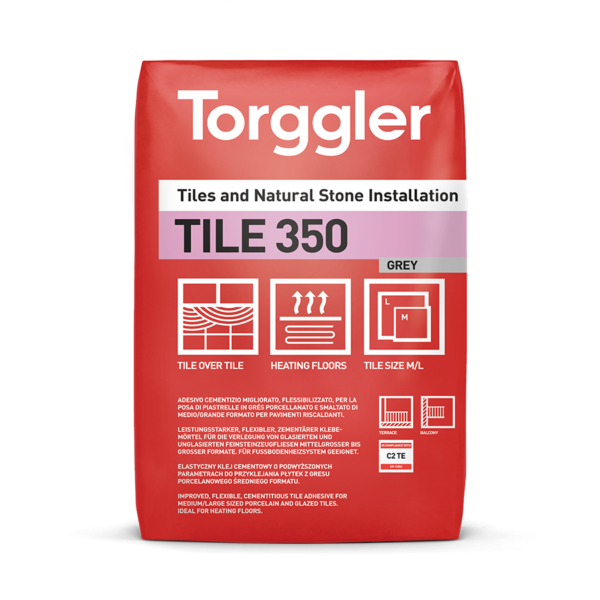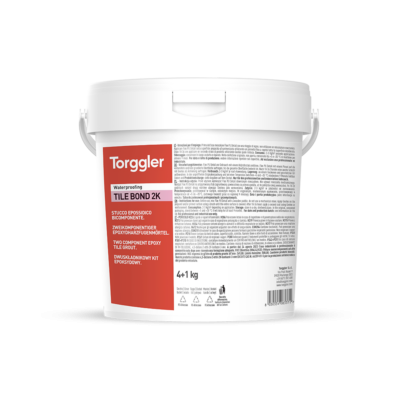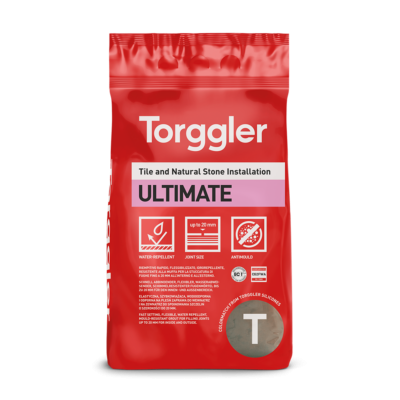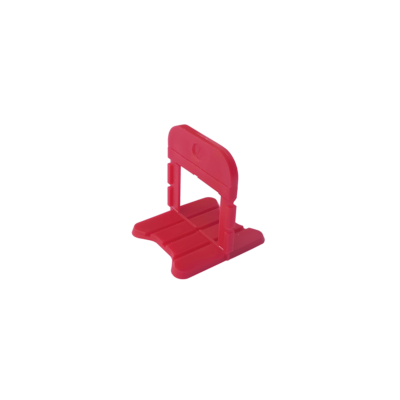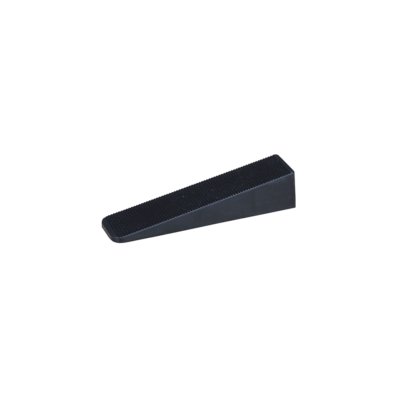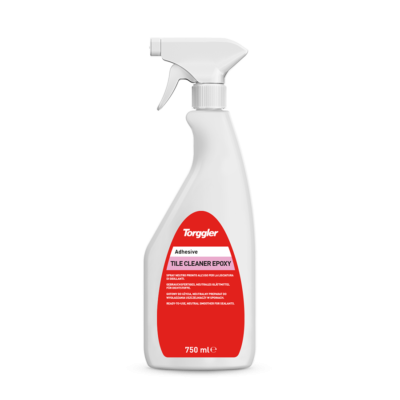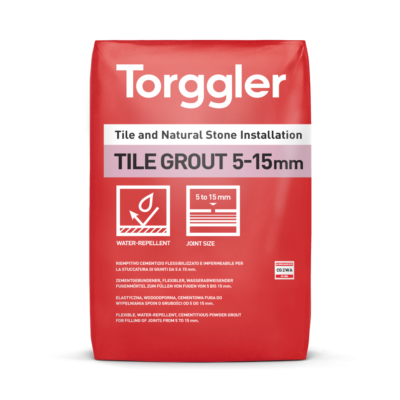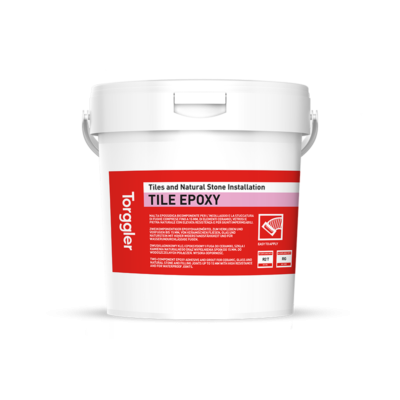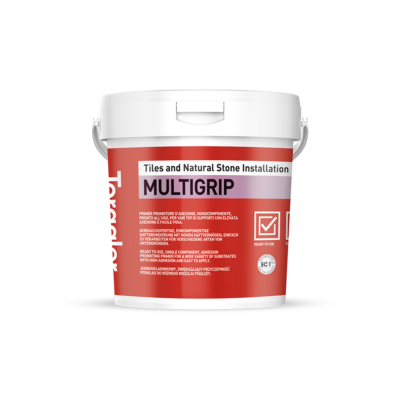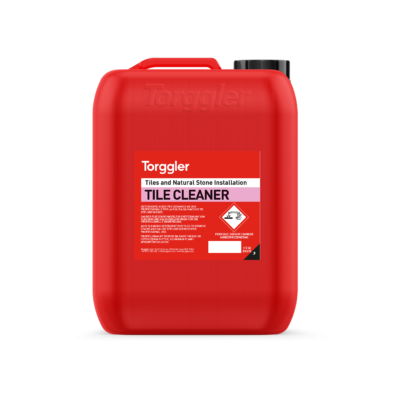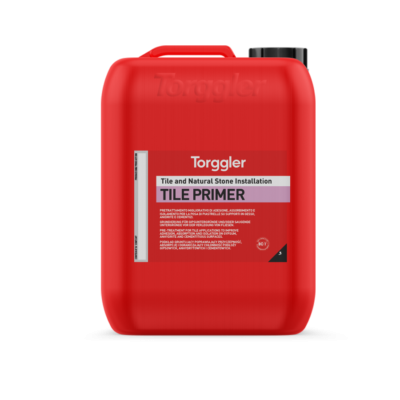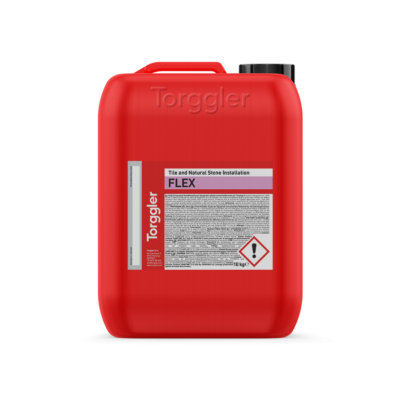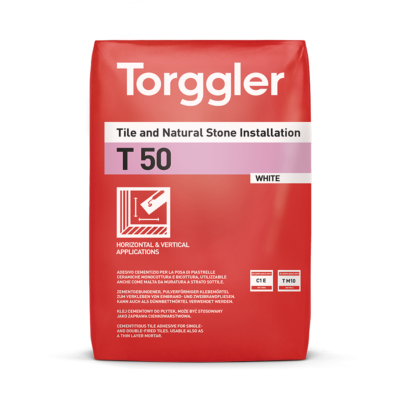Tile 350 is a cementitious tile adhesive, available in white and grey, consisting of a mixture of highresistance cements, selected aggregates and a high percentage of synthetic resins and special additives. Specially formulated for gluing glazed and porcelain stoneware tiles of all sizes. After mixing with water, you have an adhesive which is easy to use, highly thixotropic, very flexible and highly adhesive for all types of surface including old floors and ceramic tiled surfaces. When applied on walls, it does not run and prevents wall tiles from slipping. Thanks to its extended open time, laying tiles is easy even in warm and windy weather conditions. The hardened adhesive is deformable and will absorb movements of the substrate. It is suitable therefore for gluing flooring subject to high mechanical stress. It resists freezing/thawing cycles. Classified as a cementitious adhesive of class C2 TE in the standard EN 12004.
Instructions for use
Preparation
The surfaces to be covered must be suitably dry, resistant, solid and regular, clean and free of oils and greases, dust, loose material, dirt of any kind and any traces of old paint. The surfaces must also be sufficiently cured and free of significant shrinkage. As a general rule, traditional cement bedding with normal setting and hardening must be cured for at least 28 days. Cement or cement lime plasters must be dried for at least 14 days. Major surface imperfections and irregularities such as level differences, cavities, gravel pockets and eroded or deteriorated points must be repaired in advance and filled out with a self-levelling smoothing product such as Livellina 0-10 or Livellina 5-30, or with a suitable mortar such as Restauro, Rinnova or Monorasante. Very porous, flaking or dusting surfaces with poor mechanical strength must be consolidated in advance with Tile Primer.
Mixing the product
Mix Tile 250 with 28-30 % clean water (7.0-7.5 litres per 25 kg bag) as follows: pour almost all the mixing water required in a suitable container. Then add the powder product, slowly, and mix at the same time using a low speed electrical drill with mixer attachment. Once you have added all the powder product, pour in the rest of the water and mix until the product is smooth and lump-free, with a semifluid consistency. Make sure you remove all non-mixed lumps of material from the walls and the bottom of the container. Allow the mixture to stand for about 5 minutes and then mix again briefly. The adhesive mix prepared in this way has a pot life in the container of about 5-6 hours under normal conditions (at 20 °C). Higher temperatures reduce the pot life, lower temperatures increase it. If subject to direct sunlight, that is, high temperatures, wet the surface with a sponge to cool it and then wait until all the surface water has evaporated.
Application
Apply the adhesive with an appropriate toothed trowel. The size of the trowel teeth depends on the type and size of the tile to be glued: total coverage of the back of the tiles must be guaranteed. For better adhesion, first apply a thin and uniform layer of adhesive on the surface using the smooth part of the toothed trowel and then apply, immediately, a second layer of the thickness required using the toothed part of the trowel. Apply the tiles, pressing them slightly and moving them crossways slightly. When gluing tiles bigger than 33×33 cm with marked relief pattern on the back, for outdoor applications, especially in areas subject to major heat changes or freezing/thawing cycles, follow the “butteringfloating” technique: that is to say, apply the mixed adhesive with the toothed trowel to the surface and spread it out using a trowel on the back of the tile, smoothing off as required. Provided the quantity of adhesive spread out is sufficient, you now have adhesive-tile contact extended along the entire gluing surface (this condition is essential for laying floors and surfaces exposed to freezing cycles and considerable stress from water). Mix with one part Antol Flex and one part water for vitreous and ceramic mosaic tiling and applications in tanks and swimming pools Only lay the tiles within the time interval during which the adhesive spread out is still fresh and sticky, that is, before a surface film forms. This time interval is known as the “open time” of the adhesive and depends on the environmental conditions. The open time of Tile 350 is longer than 30 minutes at 23 °C and 50 % relative humidity. High temperatures and conditions of direct sunlight and wind or very porous and absorbent surfaces may reduce the open time considerably. Low temperatures, high environmental humidity and non-absorbent surfaces may increase the open time. If the open time has passed and the adhesive spread out has formed a surface film, you must use the toothed trowel again to break the film and “freshen up” the surface Do NOT wet the surface as this would create a film of anti-adhesive water which would prevent contact of the tiles with the adhesive and the entire operation would be compromised definitively. The tiles do not normally require wetting before laying. However, tiles with dusty back should be cleaned by dipping them in clean water for a few seconds. For gypsum surfaces, pre-treatment with Tile Primer is required.
Warnings
Do not use on the following:
- wood and wood conglomerates, metal surfaces, rubber, PVC, linoleum and the similar materials
- unstable substrates subject to deformation and high mechanical stress
For applications on gypsum or anhydrite surfaces, pre-treatment of the surface with Tile Primer is required. If you have any doubts or queries about this type of application, contact our Technical Office. Do not apply the product at temperatures below +5 °C or above +35 °C. Do not mix the product with other binders such as cement, hydraulic lime, gypsum, etc. The mix cannot be diluted with water once it has started setting. Do not use the mixed product when it has already started to set. Therefore, always prepare quantities of mix which can be used within the pot life.
